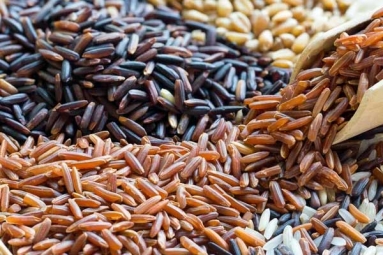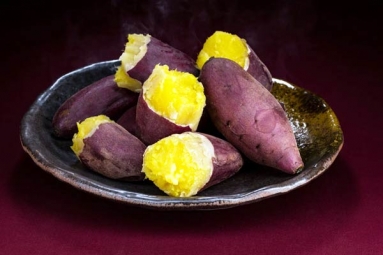
(Image source from: Canva.com)
You might have pondered this before: is it better to boil your veggies or steam them? It may seem like a minor cooking question, but this simple choice can affect everything, from the taste and appearance of your veggies to the amount of nutrition they provide. One method makes them soft and cozy, while the other keeps them light and refreshing. If you have ever thought about why your broccoli sometimes looks bland or why your carrots lose their sweetness, the cooking method could be the reason. Boiling and steaming are both traditional techniques. They are straightforward, do not require oil, and are great for healthy meals. However, the two methods act quite differently when heated. So, which technique helps your vegetables maintain their color, taste, and nutrition? Let’s explore.
When you steam vegetables, you are cooking them gently with steam from boiling water, not by putting them in water. The vegetables are held above the water in a steamer basket or colander, and the steam evenly softens them without washing away their natural taste. Since they don’t touch the water directly, most nutrients, particularly water-soluble vitamins like Vitamin C and the B-complex vitamins, remain intact. That's why steamed vegetables often appear more vibrant and taste fresher. You'll see that greens stay bright, carrots become more colorful, and broccoli retains its satisfying crunch. Steaming also allows the natural sweetness of the vegetables to come through, resulting in a fresh, balanced taste.
Tip: Add a few drops of lemon juice or sprinkle some herbs in the steaming water. This subtly boosts both taste and smell without adding any calories.
If you are in a hurry or want a healthy meal without cooking on the stove, many restaurants now provide lightly steamed vegetable bowls and salads that you can conveniently order online through food delivery services.
Boiling is easy and well-known. You simply put your vegetables in a pot of hot water and cook them at 100 degrees Celsius until they're tender. It’s quick, uncomplicated, and perfect for busy days or when you are making large amounts of food. But there is a downside. A lot of nutrients leach into the water while boiling. Unless you use that water in a soup, dal, or curry, those nutrients get wasted.
Boiled vegetables also tend to get softer and, if overcooked, can become mushy or flavorless. This is because boiling breaks down the cell walls and pulls some of the natural flavor out of the vegetables. Nevertheless, boiling still has some benefits. It is great for starchy vegetables like potatoes, sweet potatoes, and beets, which become creamier and easier to digest when boiled.
Tip: Don’t discard the leftover water. It is rich in nutrients. Use it in soups, curries, or even to knead roti dough for an extra nutritional punch.
In summary, boiling is convenient, while steaming shows more care. Steaming helps to keep the good stuff in your vegetables just like nature made them. When it comes to nutrition and flavor, steaming is the better choice. Research published in the Journal of Agricultural and Food Chemistry indicates that steaming does a better job of retaining antioxidants and vitamins compared to boiling. Moreover, steamed vegetables tend to maintain their natural colors and crunchiness, making them not only taste better but also more visually appealing. However, if you need a soft texture, like for mashed potatoes, soups, or baby food, boiling is still the way to go. Thus, it’s not about completely eliminating boiling; it’s about understanding when to use each method effectively.
Both boiling and steaming can help make vegetables easier to digest by breaking down tough fibers, but steaming has a bit of an edge. It keeps digestion-friendly elements intact, particularly in cruciferous vegetables like cabbage, cauliflower, and broccoli. In contrast, boiling can wash away some of those beneficial components. Ayurveda also supports steaming, viewing it as a pure cooking method that maintains the life energy, or prana, in food. Simply put, steamed dishes feel lighter, fresher, and more revitalizing. Steaming is considered one of the healthiest ways to cook because it preserves vitamins and minerals without using oil, making it suitable for people who are watching their weight, managing diabetes, or caring for their heart health.
While steaming is healthy, it can also be easy to mess up. Here are some common mistakes to avoid:
1. Oversteaming: This is the most frequent error. Vegetables should be crisp-tender, not mushy.
2. Overcrowding the basket: Steam needs to circulate properly; packing in too many vegetables traps moisture.
3. Uneven chopping: Cut the vegetables into similar sizes so they cook evenly.
4. Skipping seasoning: Steaming can sometimes dull flavors. Putting a bit of salt or herbs in the water can enhance taste.
Bonus tip: Drizzle steamed vegetables with olive oil, lemon juice, or a sprinkle of chaat masala for added flavor.
While boiling may seem easy, minor mistakes can lead to a loss of both flavor and nutrition.
1. Boiling for too long: Most vegetables need just three to six minutes. Longer boiling leads to loss of texture and nutrients.
2. Forgetting to salt the water: A small amount of salt helps keep vegetables firm and improves flavor.
3. Throwing out the water: Reuse the water unless it’s bitter - it contains valuable nutrients.
4. Putting vegetables in cold water: Always add them after the water is boiling. This approach helps to maintain color and nutrients better.
Chef's trick: For bright green beans or broccoli, boil them briefly and then immediately plunge them into cold water. This halts cooking and keeps their vibrant color.
If you don’t want to prepare or wait, you can also find healthy mixed vegetables, soups, and curries offered for quick delivery on most food apps - a great option for a nutritious dinner on a busy evening.
If you find it hard to choose between two methods, try using both. For instance, you can partially cook hard veggies like carrots or beans in boiling water for a short time, then finish cooking them by steaming. This way keeps them crunchy but soft and also saves some cooking time.
Another option is to use a method that combines boiling and steaming. You can boil starchy veggies like potatoes while steaming leafy greens above them. This approach saves energy and helps you enjoy both taste and nutrition at the same time.
It’s important to remember that smart cooking isn’t about following strict guidelines. It’s more about finding balance. Understanding how to mix different cooking methods can make your daily meals both healthier and more delicious.
Both steaming and boiling have important roles in a healthy kitchen. If you want to keep nutrients, color, and a nice crunch, steaming is usually the better option. It’s gentle, clean, and great for healthy meals every day.
However, when you're making comfort foods like dal, soup, or mashed veggies, boiling is still a great choice—especially when the water used for cooking is included in the dish.
So, the next time you’re ready to chop a bunch of vegetables, ask yourself: "Am I looking for freshness and nutrition, or do I want something warm and comforting?" This will help you choose the right cooking method. Enjoy your cooking!







